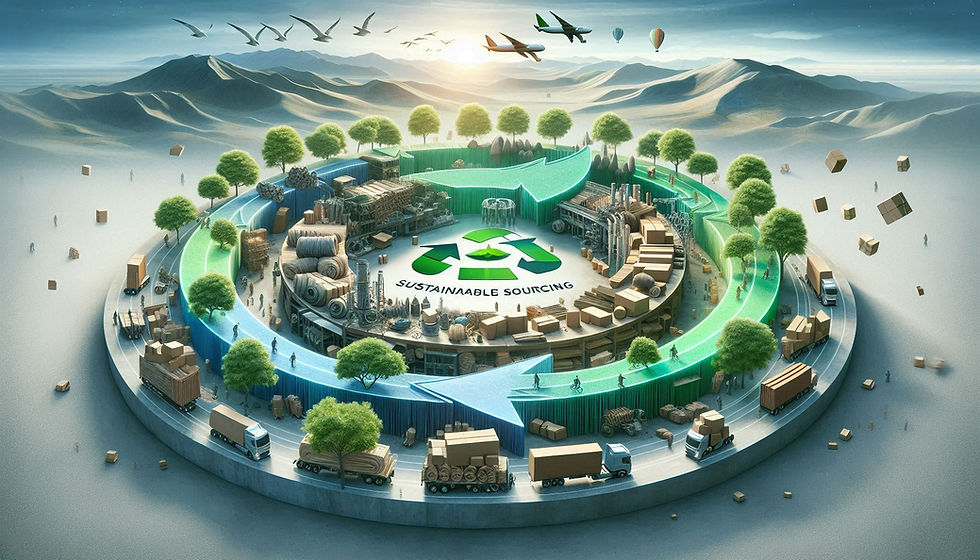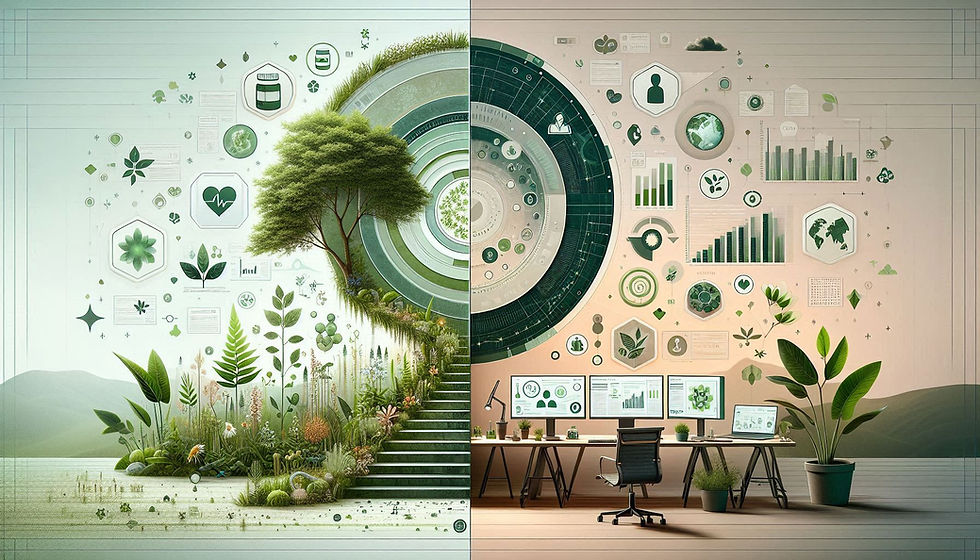How Circular Economy Strategies Are Revolutionizing Sustainable Solutions: An Editorial Perspective
- Aaron Levin
- Dec 26, 2024
- 4 min read
The circular economy is not just a buzzword but an essential framework that changes our understanding of resource management and sustainability. By emphasizing durability, reuse, and recycling, this approach flips the traditional linear model—where resources are extracted, used, and discarded—on its head.

This editorial will explore how circular economy strategies offer innovative solutions to critical environmental issues. This is a call to action for sustainability advocates, business leaders, freelancers, and entrepreneurs.
Understanding the Circular Economy
The circular economy rests on the idea that waste is not an end-stage but a resource that can be reintroduced into production processes. Moving away from the "take, make, dispose" mindset, this model promotes a closed-loop system where materials are reused and repurposed consistently.
Transitioning to a circular economy conserves natural resources, lowers pollution, and reduces global greenhouse gas emissions.
Research indicates that shifting to a circular economy could reduce emissions by up to 70% by 2030. This approach creates an environment where economic growth occurs harmoniously with our planet's health.
Key Principles of Circular Economy Strategies
1. Design for Longevity
A crucial part of circular economy strategies is crafting products meant to last. For example, companies like IKEA focus on using sustainable materials and emphasizing product durability, allowing items to have a lifecycle of 10 years or more. This focus on longevity decreases waste and promotes responsible consumption.

Companies that prioritize the design of their items for easy repair can reduce unnecessary waste. For instance, Fairphone, a social enterprise, offers users a smartphone to repair themselves. This model promotes sustainable practices and empowers consumers.
2. Embrace Repair and Reuse
Repair and reuse strategies are fundamental to the circular economy. Encouraging consumers to fix their problems instead of discarding malfunctioning products can significantly reduce waste. For instance, companies like Patagonia offer repair services and even host "Worn Wear" events where people can learn to repair their gear.
Businesses can support this shift by providing repair services and easy access to spare parts.
For example, if local communities can organize workshops focused on skill-sharing for repair, it creates a culture of sustainability and loyalty among consumers.
3. Recycling and Upcycling
Recycling may be the most recognized element of the circular economy, but upcycling—transforming waste into higher-value products—has gained traction as a creative solution.
For industries, using byproducts can create new revenue sources from what would typically be waste. One notable example is Coca-Cola, which developed containers from 50% recycled plastic to demonstrate its commitment to sustainability. Additionally, brands like Adidas utilize ocean plastic in their footwear, emphasizing environmental stewardship.

Implementing effective recycling and upcycling strategies helps preserve resources and serves as a marketing tool for brands focused on sustainability.
Case Studies in Circular Economy Implementation
1. Textile Industry Initiatives
The textile industry presents both significant challenges and substantial opportunities for circular practices. Brands like Patagonia and Eileen Fisher have implemented take-back programs that allow customers to return used garments for refurbishment or recycling. This approach not only diverts 75% of textile waste from landfills but also cultivates a conscientious customer base.
By increasing consumer awareness about garments' life cycles and promoting sustainable buying habits, these brands can significantly impact people's views of fast fashion.
2. Electronics Reimagined
The electronics sector also contributes significantly to environmental problems. However, innovations such as HP's Ink Cartridge Return program and Apple's Device Trade-In initiative demonstrate effective circular strategies.
These programs encourage customers to return their old devices, refurbished or recycled.
For instance, Apple reported that its recycling program has diverted more than 1.6 million devices from landfills, showcasing a sustainable approach that resonates with eco-conscious consumers.
3. Construction Goes Circular
The construction sector is ripe for circular economy principles. Companies that adopt modular building techniques create more straightforward structures that can be disassembled and reused.
This practice ensures that materials do not end up in landfills at the end of a building's life.
Moreover, firms focusing on locally sourced and recycled materials—like IKEA's sustainable home projects—are setting positive examples of how construction can align with environmental goals.

Challenges and Considerations
While the circular economy presents valuable solutions, the transformation comes with its own set of challenges.
1. Consumer Behavior
Changing consumer behavior is essential for success. Many still adhere to traditional consumption patterns, and shifting to circular practices necessitates education and incentives to foster engagement.
2. Economic Viability
Transitioning to a circular model often requires considerable investment in research and development and changes to supply chain management for businesses.
Companies must balance immediate expenses against long-term sustainability gains, potentially resulting in significant cost reductions of up to 30% over time.
3. Policy and Regulation
Government support is crucial. By establishing a favorable legal framework, sustainable policies can encourage innovation and motivate businesses to embrace circular strategies.
The Role of Technology in Supporting Circular Economy
Technology plays an increasingly vital role in advancing circular economy practices. The potential is enormous, from tracking materials to optimizing resource flows through AI.
1. Digital Platforms
Digital platforms designed for sharing, trading, or recycling items can enhance the flow of materials. Applications connecting users to local repair shops or recycling centers empower communities to embrace Circular Economy principles effectively.
2. Blockchain
Blockchain technology offers a unique solution for enhancing transparency in the circular economy. Enabling the tracking of product lifecycles and ownership helps ensure responsible resource usage throughout the supply chain.
3. IoT (Internet of Things)
IoT devices provide real-time insights into resource utilization and maintenance needs. This information allows businesses to manage product lifespans proactively, ultimately optimizing processes and reducing waste.
Taking Action for a Sustainable Future
The circular economy is a vital innovation in our approach to sustainability. By prioritizing durability, repairability, recycling, and upcycling, individuals and businesses can contribute meaningfully to a healthier planet.
Adopting circular practices will create a foundation for a sustainable future, with potential benefits such as economic resilience, lower environmental impact, and stronger community ties.

We can lead this vital shift as sustainability advocates, business leaders, freelancers, and entrepreneurs. Together, we can transform waste into opportunities, paving the way for a prosperous and sustainable world for generations.



Comments